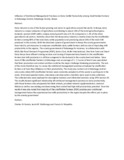| dc.contributor.author | Nundu, Charles O. | |
| dc.contributor.author | Wakhungu, Jacob W. | |
| dc.contributor.author | Muyekho, Francis N. | |
| dc.date.accessioned | 2021-12-31T09:23:02Z | |
| dc.date.available | 2021-12-31T09:23:02Z | |
| dc.date.issued | 2020-05-01 | |
| dc.identifier.uri | https://doi.org/10.9790/2380-1304031317 | |
| dc.identifier.uri | https://www.iosrjournals.org/iosr-javs/papers/Vol13-issue4/Series-3/B1304031317.pdf | |
| dc.identifier.uri | http://ir-library.mmust.ac.ke:8080/xmlui/handle/123456789/1985 | |
| dc.description.abstract | Dairy industry is one of the fastest growing sub-sector in agriculture around the world. In Kenya,
dairy industry is a major subsector of agriculture contributing to about 14% of the total agricultural gross
domestic product (GDP) with a unique annual growth rate of 4.1% compared to 1.2% of the other agricultural
sub sectors. Statistics show that the Kenya dairy industry is mainly driven by the smallholder farmers owning
80% of the total dairy cattle population and producing about 56% of the total milk produced in the country.
With the devolved system of government in Kenya the county governments have tried to put measures to
empower smallholder dairy cattle farmers with an aim of improving milk productivity in the regions. The county
government of Kakamega for instance, in collaboration with NGOs like Rural Outreach Programme (ROP),
Send a Cow, Heifer International, One Acre Fund and Smart Dairy Kenya have offered training services and
issuing of improved dairy breeds to the smallholder farmers but milk production is still low compared to the
demand in the county level and below. Since most of the smallholder farmers in Kakamega own an average of 1-
1.5 acres of land it was speculated that feed production and animal nutrition could be the major challenge
hindering productivity. The aim of the study therefore was to survey the nutritional management practices
employed by smallholder farmers and how they influence on their productivity. The study was carried out in
Kakamega central sub county where 400 smallholder farmers were randomly sampled in all the wards to
participate in the study. Structured questionnaires, interviews and observation checklists were used in data
collection. The collected data were analyzed for descriptive statistics and inferential statistics using SPSS
version 20. The result showed significant relationship of nutritional management practices to dairy
productivity, with those farmers who adequately fed their animals, provided mineral supplementation, waterad
libitum as well as vaccinating and deworming their animal had high milk productivity potential. From the
results it was also noted that majority of the smallholder farmers (95%) practice poor nutritional management
hence the experienced low milk productivity in the region despite the efforts put in place by the county
government | en_US |
| dc.language.iso | en | en_US |
| dc.publisher | IOSR Journal of Agriculture and Veterinary Science (IOSR-JAVS) | en_US |
| dc.subject | Influence, Nutritional, Management, Practices, Dairy, Cattle, Productivity , Small, Holder, Farmers | en_US |
| dc.title | Influence of Nutritional Management Practices on Dairy Cattle Productivity among Small Holder Farmers in Kakamega Central, Kakamega County, Kenya. | en_US |
| dc.type | Article | en_US |

